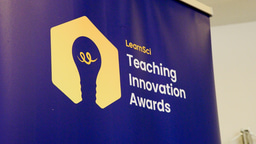Distance learning and yet student engagement: an example of a virtual flipped classroom praised by teachers and learners

All teachers (from kindergarten to university) have been confronted with the problem of maintaining the attention of children and students, who are forced to spend several hours in front of a screen, in order to follow lessons (and sometimes more to hand in homework). Many teachers have tried to use interactive methods to engage viewers. These methods (quizzes, polls, etc.) enrich the lessons and potentially allow their pace to be adapted to the needs of the students.
I have been experimenting with the virtual flipped classroom during this first semester of 2021. Flipped classrooms have long been a pedagogical innovation supported by many teachers in the SFBBM's teaching theme group ((French Society of Biochemistry and Molecular Biology), Quentin Vicens, Jean-François Parmentier, Jean-Luc Souciet) or at the University of Paris (Pierre Poulain). The flipped classroom can take several forms (1), in my case (type II flipped classroom (2)), it is divided into two main phases: a first asynchronous preparatory phase during which the students prepare a course material in a relatively autonomous way but guided by the teacher (by remote exchange) who can advise documentary resources (articles, videos of other courses...) for the elaboration of the future material. In a second synchronous phase, the students present the course they have prepared to their classmates, who then have a critical and constructive look at the proposed content (the students can ask questions and interact with their classmates). The student is thus engaged in an active process of knowledge construction, which reinforces his knowledge of the subject on which he has to focus, but also makes it easier for him to listen to the work of his classmates (if it is related) (2).
In previous years, I set up these reversed classes with my 3rd year undergraduate students in my cell signalling course. The strategy was quite pragmatic:
* identify one or more signalling pathways totally unknown to the students by cutting the biological process into steps
* cut the pathway into 7 steps: stimuli, receptor, mechanism of action of the activated receptor, regulated genes....
* form groups of 5 students, assigning 1 step to 1 group (in a signalling pathway, 35 students are thus involved in the form of 7 groups of 5)
* assign one or more papers to each group and ask them to present a step related to the papers in 5 slides (1 student per slide)
* ask the students to present their work in the order of the steps so as to gradually highlight the pathway
In practice, as a tutor and referent, I intervened beforehand on the choice of articles, the orientation of the groups of students towards a particular point of the stage, then during the class as a moderator at each inter-stage and at the end of the reversal course to propose a big summary of the students' work (3). In the end this strategy showed that students were generally so curious about what was happening in the steps framing their own task, that the whole pathway was known to everyone even before the presentation. Focused work, spontaneous involvement, trickle-down and then public presentation thus reinforced the students' (and often even my) knowledge. (JLS opinion: yes, yes, yes, we always learn from others!)
In the context of the health crisis, it was impossible to carry out this activity face-to-face, especially as I was hosting around 105 students. So I decided to triple the bet by proposing to them to do 3 reversed courses (3 x 35 students). To my surprise, several elements improved and could be kept in the face-to-face version. I had to share an online document (Google Sheets type) to divide the steps between the students, whereas in previous years I worked by email. In two days, the groups of five formed spontaneously and selected the articles and their favourite theme from the shared document, which they could then retrieve without any intervention from me on the University of Paris' Moodle platform. This saved time for them as well as for me, but above all it generated involvement and responsibility from these students.
On the other hand, each group was aware of the constitution of the other groups and spontaneously, they decided to build a single slide show by way of signage allowing 1) to simplify the transitions between stages during the restitution, but especially 2) to deliver more elaborate transitions between these stages.
These three improvements, supervised by the teacher's work, can be transposed to any format (distance, hybrid or asynchronous distance work, face-to-face). Recording on video-conferencing platforms (Zoom for the University of Paris) made it possible to recover the videos of these courses and to make them available to all students during their revision. I also provided them with video seeds (created by me) summarising the main notions of the courses presented.
This experience encourages me to continue thinking about the usefulness of flipped classrooms and I am already looking forward to the start of the 2021-2022 school year for more courses and more interactive sessions. If you are using this strategy, please let me know the results.
Written by Xavier Coumoul
Reviewed by Pierre Poulain, Quentin Vicens, Jean-François Parmentier, Jean-Luc Souciet
References
- Parmentier, Jean-François, Vicens, Quentin. 4 scenarios for online teaching and professional development: concrete examples and practical advice. 9 févr 2021 [cité 2 mai 2021]; Disponible sur: https://zenodo.org/record/4641271
- Lecoq J, Lebrun M. La classe à l’envers pour apprendre à l’endroit: guide pratique pour débuter en classe inversée. 2016.
- King A. From Sage on the Stage to Guide on the Side. College Teaching. 1993;41(1):30‑5.





Join the FEBS Network today
Joining the FEBS Network’s molecular life sciences community enables you to access special content on the site, present your profile, 'follow' contributors, 'comment' on and 'like' content, post your own content, and set up a tailored email digest for updates.